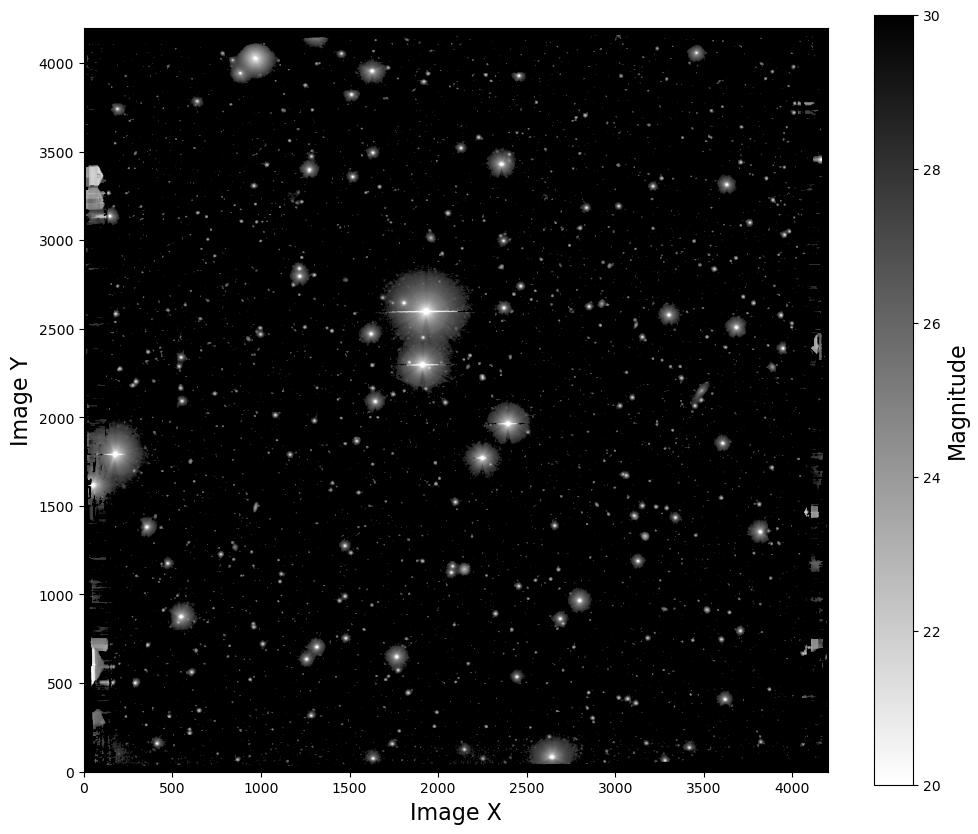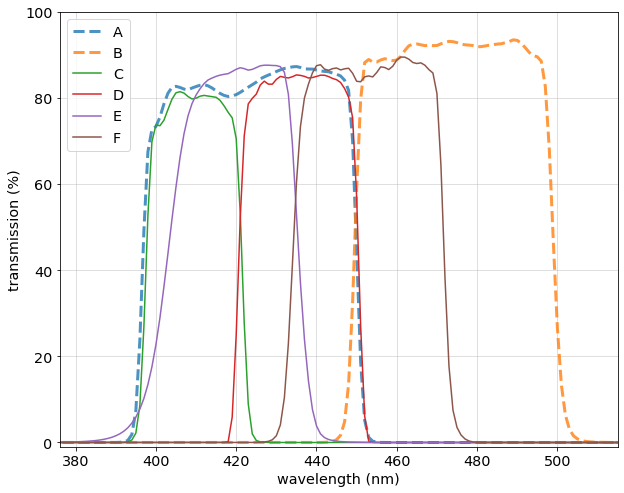WIRO LAE pilot study
Medium-band filter searching for LAE


Abstract
Lyman Alpha Emitters (LAEs) are distant, low-mass galaxies with high star formation rates. LAE’s abundance and strong emission make them relatively easy to detect in large numbers, which means they are potentially good candidates to investigate large-scale structure at high redshift. We have conducted a pilot study of LAE selection in the XMM-LSS field using the 2.3-meter telescope of the Wyoming Infrared Observatory (WIRO). Our observations utilized the WIRO DoublePrime (WDP) camera with a custom set of narrow- and medium-band filters. We have acquired more than 6.5 hours of total exposure in each of two 250 Å filters (which we dub the WDP “C” and “D” filters) and more than 1.5 hours in another two medium filters (which we call WDP “A” and “E”). We combine observations in these customized filters with observations through the Sloan g-band filter to select LAE targets for potential follow-up with the Dark Energy Spectroscopic Instrument (DESI). This work was partially supported by the U.S. Department of Energy, Office of Science, Office of High Energy Physics under Award Number DE-SC0019022.
Summary
We obtained deep imaging of the XMM-LSS field in multiple narrow- and medium-band filters to test the efficiency of these filters for detecting and selecting Lyman Alpha Emitters. We successfully acquired long exposures in the custom C and D filters and selected more than 1000 LAE candidates. The medium band filters require less time than traditional narrow band filters for LAEs targeting.